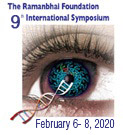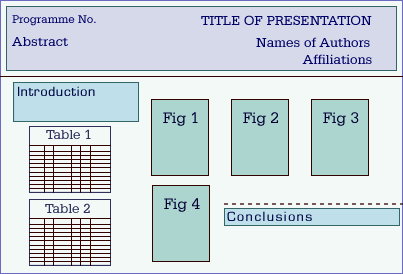 |
||||||||||||||
| | Technical Programme | Organizing Committee | Abstract & Posters | Social Events | Event Partners | |
In addition to various plenary lectures, the symposium will also provide an opportunity to scientists to present their research work in the form of poster presentation. Please use the Online Abstract Submittal System for abstract submission. Standard Form can also be downloaded and printed or sent as an e-mail attachment directly to the Scientific Organizing Committee. ACS Five-by-Five Sessions:
We encourage participants to submit abstracts by January 20, 2020, of original research work or original publications only, and no review work will be accepted. The abstracts of only registered participants will be accepted. Abstract Submission : Guidelines for Poster Presentation Posters should be readable by viewers five feet away. The message should be clear and understandable without oral explanation. The following guidelines have been prepared to help improve the effectiveness of poster communication. 1. Initial Sketch - Plan your poster early. Focus your attention on a few key points. Try various styles of data presentation to achieve clarity and simplicity. Does the use of color help? What needs to be expressed in words? Suggest headlines and text topics. 2. Rough Layout - Enlarge your best initial sketch, keeping the dimensions in proportion to the final poster. Ideally, the rough layout should be full size. A blackboard is a convenient place to work. Print the title and headlines. Indicate text by horizontal lines. Draw rough graphs and tables. This will give you a good idea of proportion and balance. If you are working with an artist, show him or her the poster layout. Ask associates for comments. You are at a stage when you can still experiment and make changes. 3. Final Layout - The artwork is complete. The text and table are typed, but not necessarily enlarged to full size. Now ask, is the message clear? Do the important points stand out? Is there a balance between words and illustrations? Is there spatial balance? Is the pathway through the poster clear? 4. Poster dimension: The poster dimension should be maximum 3’ high and 4’ wide. Prepare a 6" high headline strip that runs the full width of the poster. Include the title, authors, and affiliations on the strip in letters not less than 1" high. Post a large-typed copy of your abstract in the upper left-hand corner. 5. Balance - The figures and tables should cover slightly more than 50% of the poster area. If you have only a few illustrations, make them large. Do not omit the text, but keep it brief. The poster should be understandable without oral explanation. 6. Topography - Avoid abbreviations, acronyms, and jargon. Use a consistent font throughout. An 8 1 / 2 " x 11" sheet of paper photostatically enlarged 50% makes the text readable from five feet. 7. Eye Movement - The movement (pathway) of the eye over the poster should be natural, down the columns or along the rows. Size attracts attention. Arrows, pointing hands, numbers and letters can help clarify the sequence. 8. Simplicity - Resist the temptation to overload the poster. More material may mean less communication. Please see the suggested format (given below).
|
